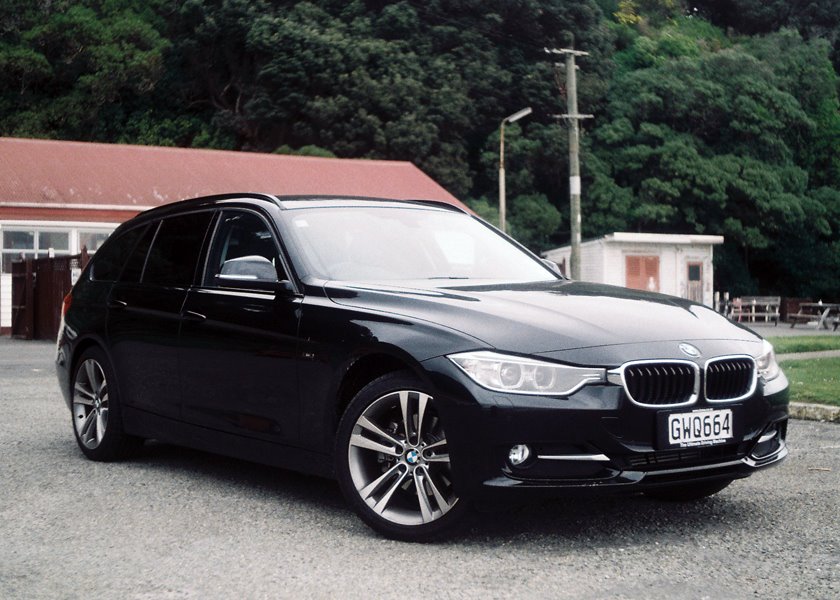 Style We say it’s one of BMW’s most stylish estates since the E34 Touring
Style We say it’s one of BMW’s most stylish estates since the E34 Touring
Jack Yan is publisher of Lucire.
Jack Yan lives with the BMW 320d Xdrive Touring Sport Line for an extended road test, and discovers that it keeps the Bavarians at the top of the class with an all-round, enjoyable package
photographed by the author on a Voigtländer Bessamatic Deluxe
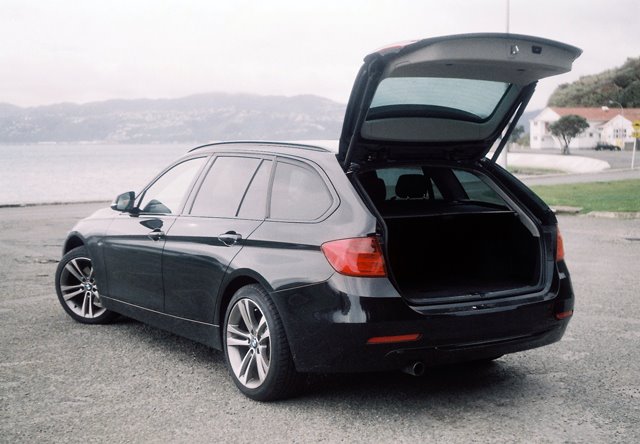
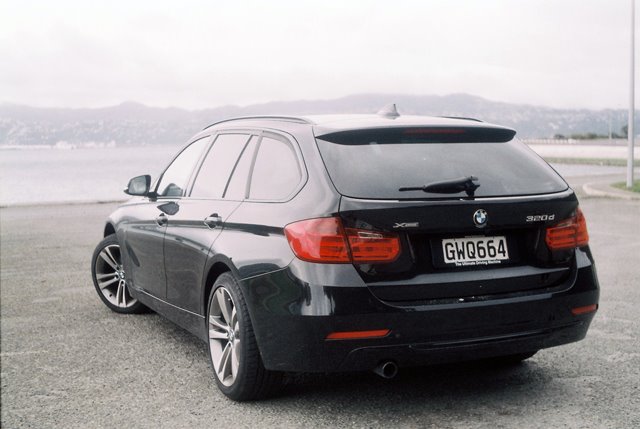
Open and close The tailgate opens high—and closes at the touch of a button
Traditionally, BMW hasn’t been strong on estates in the New Zealand market. Judging by the second-hand market, Audi had done a better job shifting A4 Avants, and it was a market that München had left—until recently.
With the E90, the former 3-series, BMW had a limited range of estates, but with the F31 that débuted in the New Zealand market early in 2013, the company mounted a grander assault.
The market surely can take it. Having an estate is not so often about having stuff to carry. It’s suggesting that you might have stuff to carry, more than the guy in the saloon. My Dad, during my teen years, had a Ford Sierra Turnier for deliveries, and on reflection, he would have been able to do the job, had it been available in New Zealand, with the hatchback. Very rarely was the entire load space required. Nevertheless, then the traditional Kiwi wagon spoke to the bloke who needed the back to carry his work.
Shifts in our behaviour mean that the work–life balance figures more with what type of car we consider. Like so many things, image sells.
Kiwis love our station wagons, and even humble Mazda and Holden proved that they need not be capacious carry-alls. The lifestyle estate fits into modern Kiwi culture: saloon on most days, except when you need to get away for surfing or skiing.
Or that you simply want to suggest that you do. The sporting lifestyle and the Kiwi attitude go hand in hand, and you’d think that BMW, the company with a better claim to the Touring trade mark than Toyota (remember the 1992 Corona?), would be a natural bedfellow with our culture.
That might be where Audi got it right: it wasn’t selling to anyone who really needed the space. When was the last time you saw an A4 Avant filled right up?
So having a wagon makes better sense for BMW, with its Freude am Fahren, or The ultimate driving machine: if there is indeed pleasure from being behind the wheel, and there is pleasure in communicating the active, sporting lifestyle, then there’s one place to go. It’s not about logic.
BMW’s 3-series Touring launch earlier in 2013 gave us a chance to take the cars on the road between Auckland and Paihia, but what is it like as a day-to-day proposition?
While communicating lifestyle comes in to what type of car you choose, the model you choose when there’s a big range (and there is now among the F31s) is more rational.
While it’s delightful to tear up state highways (at the legal limit, of course), the reality for most buyers is that they want decent value for money. A 335d is excellent for the torque and performance, but would a 320d do the job? In fact, one with Xdrive—BMW’s name for four-wheel drive—with the Ingolstadters’ Quattro firmly in its crosshairs.
We had already sampled the engine in the saloon, and found that it had the best balance between the sporting dynamics that form the cornerstone of BMW’s brand, and real-world fuel economy (43·9 mpg on our test). The difference this time was that the same unit was in a heavier car, thanks to the four-wheel-drive transmission.
Behind the wheel, you notice no difference in power. The 320d in Touring form appears to have the same performance, and while two years separate the tests, we still think you’d be hard pressed to detect the extra 60 kg.
We didn’t have great call to use the four-wheel drive in our test car around greater Wellington, but the knowledge of its security helped. Given the choice, it’s one feature that we don’t mind opting for, especially if the Touring is going to be used for lengthy drives in our nation.
The Sport Line spec seemed to work better with our all-black Touring, too. White just seems too bright a shade for the 3ers—we’ve had two on test—and while we often bemoan that cars seem to be black or silver nowadays, somehow the shade suits this model. The tinted windows at rear blend in better. The five-spoke alloy wheels are attractive, and add subtly to the overall look—this is not a BMW that screams. It’s tasteful.
Design-wise, this is an elegant car. We’ve had some reservations over earlier incarnations of the Dreier, but it looks like it was designed to be an estate from day one. It reminds us of the E34 Fünfer—one of the prettiest BMWs and, stylistically, the one that set the company on to its modern design direction—in terms of proportions, although the new F31 has a far more pronounced Hofmeister-Knick, the D-pillar shape that connects BMWs back to the 1500 model of the early 1960s.
Day to day, the 320d was comfortable and refined, and remarkably easy to live with. The handling is excellent: the Touring corners flatly, and the chassis feels remarkably balanced. Two years since the saloon’s launch, nothing has dimmed BMW’s position in the handling stakes. It’s one of those cars that does everything well and stays at the top of class, unlike certain dull mainstream brands where the cars hover around the mid-point on all measures.
The extra space did come in handy in carrying the odd load, where it was simply easier to have a generous liftgate. While this tailgate didn’t have the hands-free option (of waving your foot at the rear of the car to get it to open), the party trick of pushing a button to close it hydraulically was welcome, especially when it was open to its full height.
It was also welcoming to drive the 320d Xdrive in Eco Pro mode, where the car optimizes itself for saving fuel (with changes in the settings to the air conditioning, and, with Efficient Dynamics, uses the regenerative braking energy). One doesn’t necessarily try this on a launch, but, again, as a day-to-day proposition, it makes sense. Most journeys are probably done gently, and the knowledge that the car would deliver over 40 mpg helps, knowing that you’re saving on fuel to counter the NZ$84,800 list price.
BMW has a commitment to lower its fuel consumption average and has done more than most German luxury car makers for the New Zealand market. The 320d blends that environmental good sense with a practical, stylish package. It says of its owner: not only do I have an active lifestyle that demands that I have a stylish estate, I care about the planet. And, amazingly, it does all this in a subtle fashion, just right for our times. •
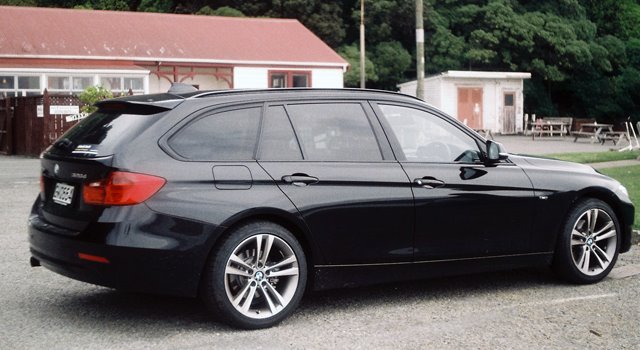
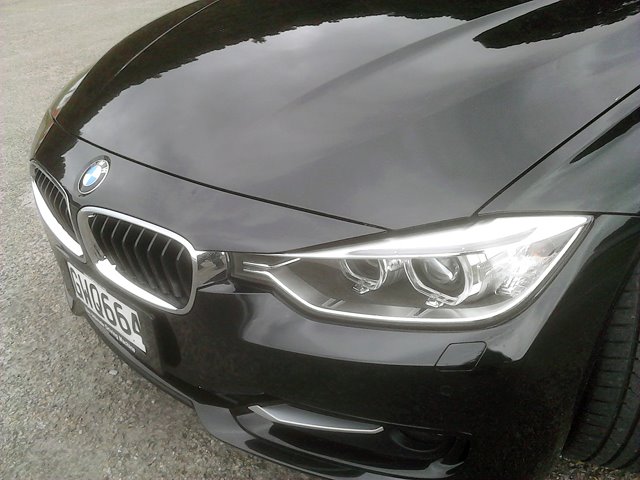
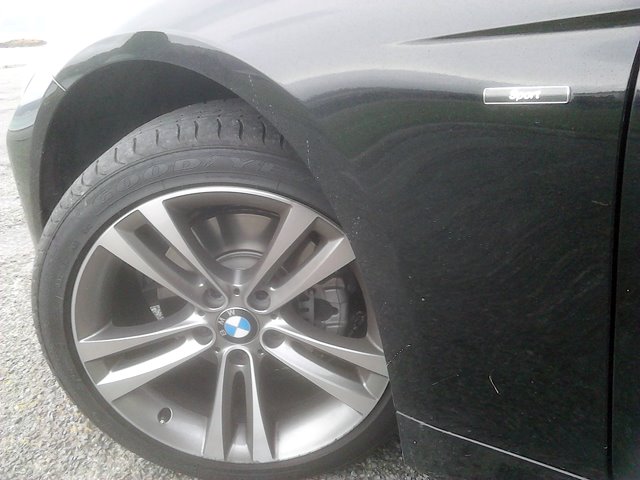
More details The BMW 320d Xdrive Touring Sport Line has those subtle touches that make it the car for the times (lower two photographs shot digitally)
Related articles hand-picked by our editors
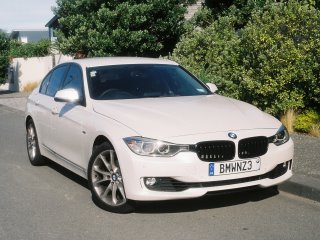 A cut above the rest
A cut above the rest
BMW’s 320i Edition 30 is one of three models commemorating the 30th anniversary of BMW New Zealand. Jack Yan drives the kitted-out Dreier
photographed by the author
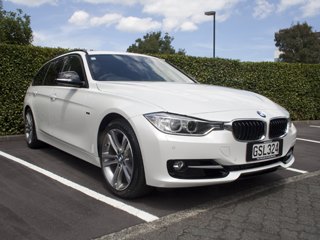 Bridging the gaps
Bridging the gaps
Jack Yan attends the BMW 3-series Touring launch, taking in roads between Auckland and Paihia, and thinks the Bavarians have a winner in more ways than one
photographs by Nigel Dunn, the author, and courtesy BMW
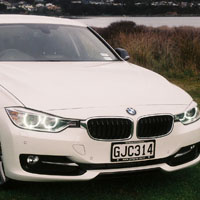 Sporting life
Sporting life
Jack Yan tests the BMW 320d Efficient Dynamics Sport Line, and finds that the Bavarians have managed to stay on top of the game, while making their latest model relevant to the 2010s
photographed by the author on a Voigtländer Bessamatic Deluxe
Advertisement
Copyright ©1997–2022 by JY&A Media, part of Jack Yan & Associates. All rights reserved. JY&A terms and conditions and privacy policy apply to viewing this site. All prices in US dollars except where indicated. Contact us here.